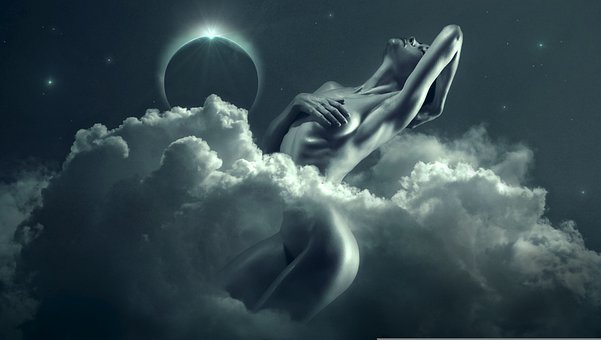Long considered somewhat strange esoteric practices, divination, astrology and tarot have made a comeback in recent years, especially on social networks. More than a divinatory art, drawing cards seems to have become an act of self carebut what is it really?
This is precisely the whole subject of the book by the tarologist and astrologer Vanessa DL, The art of tarot: reading the cards to take care of yourself, which proposes to rethink the tarot. For its author, even if popular culture has mainly retained the tarot as a mystical object for reading the future, the cards are above all an excellent way to get to know yourself better.
“Everyone should have a tarot deck for themselves at home,” she believes. It is a valuable tool for introspection, like a kind of mirror that allows you to observe yourself from different angles. From the cards, we can open up to a universe of possibilities. It’s a ritual that feels good.”
The tarot, what is it first?
- A tarot deck has 78 cards: 22 major arcana and 56 minor.
- Each card refers to multiple different themes and meanings
- The oldest known tarot deck dates from the 15e century
Rather than making predictions, the tarologist, who defines herself as a “millennial witch”, therefore prefers to focus on the present. She uses maps, their multiple symbols and meanings, to explore avenues of reflection.
“On its own, a card brings together a large number of extremely rich symbols, depending on the colors used, the figures and numbers that are represented. All of this can send us back to very diverse concepts or emotions and echo situations that we experience. It’s an evolutionary approach that lets us trace our own path,” explains Vanessa DL.
For those who have been studying the tarot for ten years, the cards also allow them to experience a form of spirituality that does not require any intermediary between oneself and “the mystery”, unlike traditional religions.
In her book, in addition to presenting each arcana, she thus offers lines of thought based on each card. For example, for the Ace of Pentacles, she suggests asking yourself the following questions: “What process am I starting?”, “What is the first step to get my project in motion?” For the Magician, Vanessa DL offers these lines of thought: “What do I want to create?”, “What are my goals, those that sincerely motivate me?”
To reinvent oneself
Always in this desire to offer a renewed approach to the tarot, Vanessa DL offers “spreading exercises”, that is to say different ways of drawing the cards.
“We can simply draw a card in the morning so that it accompanies us in our day, she illustrates. Otherwise, it can be very interesting in a group! Everyone draws a card and everyone says what it makes them think of. It has a unifying effect, it’s a good way to connect with more depth.
Besides the introspective aspect, Vanessa also appreciates the tarot for its artistic qualities. If the tarot is good, it would also be because it is a beautiful object. Each card can be contemplated as much for the richness of the symbols as for its aesthetic qualities.
“The tarot is a work of art, or rather 78 incredible works of art. It has been brilliantly reinvented many times over time. Each artist puts his grain of salt and we see today softer or more inclusive versions as with the Modern Witch Tarot and the Next World Tarot“, she underlines.
The weight of symbols
The psychologist Geneviève Beaulieu-Pelletier, however, comes to qualify this vision of the tarot by recalling that its possible benefits are absolutely not recognized. “There is nothing, no evidence, to support the validity of this practice,” she explains.
If the cards can lead to introspection, they do so, according to her, in the same way as any other material: a quote that we come across on social networks, a film, a book.
“Any image can activate memories, emotions, thoughts and lead us to questions. But, you have to be careful and not give too much weight to symbolism, she warns. If I am faced with a symbol, you have to keep in mind that it is also the result of chance, you are not obliged to give it a meaning at all costs.
According to her, the cards are therefore to be handled with care. Best to avoid giving them too much credit, especially when it comes to making decisions or dealing with difficult emotions.
We would like to say thanks to the writer of this article for this incredible web content
Take care of yourself with… the tarot?
We have our social media profiles here , as well as other pages related to them here.https://nimblespirit.com/related-pages/

